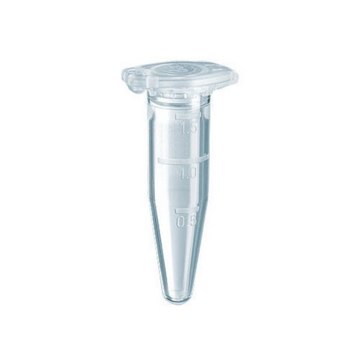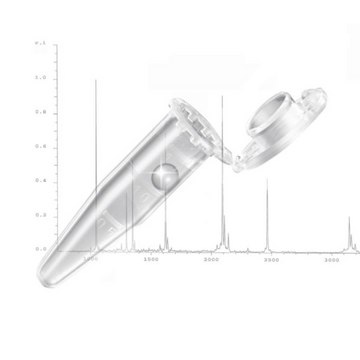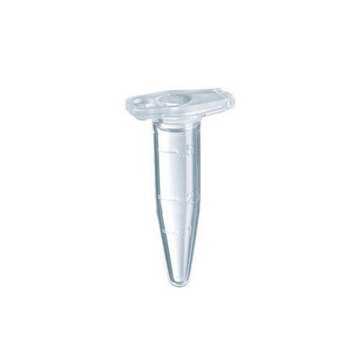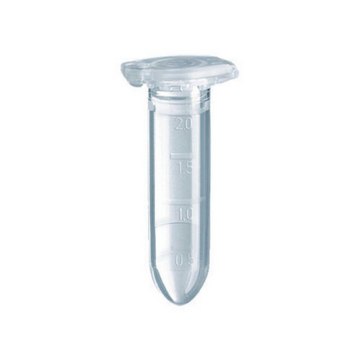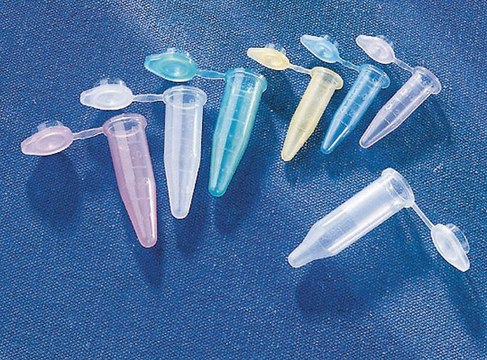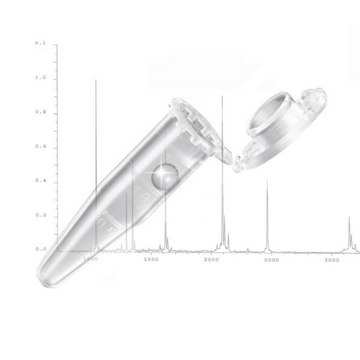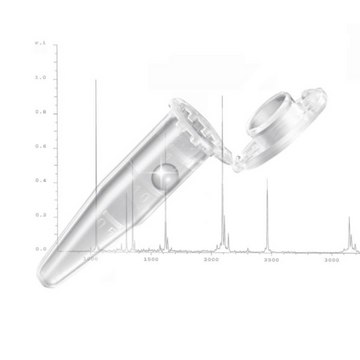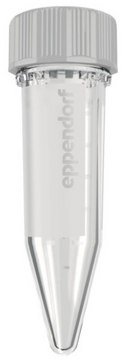EP022431102
Eppendorf® Protein LoBind tubes
capacity 2.0 mL, PCR clean, pkg of 100 ea (2 x 50ea)
Sign Into View Organizational & Contract Pricing
All Photos(1)
About This Item
UNSPSC Code:
41121703
Recommended Products
material
(push fit)
polypropylene cap
sterility
non-sterile
feature
PCR clean
packaging
pkg of 100 ea (2 x 50ea)
manufacturer/tradename
Eppendorf® 022431102
parameter
-18,000 × g max. RCF
capacity
2.0 mL
diam.
10.5 mm
color
clear
suitability
suitable for PCR
binding type
low binding surface
Looking for similar products? Visit Product Comparison Guide
General description
Avoid losing valuable samples during centrifugation, incubation and storage! Rely on the excellent protection offered by the hinged Safe-Lock lid. It contains all of our experience from 50 years of continuous optimization and development. Trust the original Eppendorf Safe-Lock Tubes, because your samples deserve only the best.
Protein LoBind Tubes, snap cap, Protein LoBind, 2.0 mL, PCR clean, colorless, 100 tubes (2 bags × 50 tubes)
- Eppendorf LoBind material ensures optimized sample recovery for improved assay results
- Free of surface coating (e.g., silicone) to minimize the risk of sample interference
- Lot-certified PCR clean purity grade: free of human DNA, DNase, RNase and PCR inhibitors
- Available in tube, microplate, and deepwell plate formats for easy-up scaling
- Precise lid sealing to minimize evaporation
Features and Benefits
Eppendorf Protein LoBind Tubes are specifically designed to ensure you get maximal protein recovery.
Legal Information
Eppendorf is a registered trademark of Eppendorf AG
Regulatory Information
新产品
Choose from one of the most recent versions:
Certificates of Analysis (COA)
Lot/Batch Number
It looks like we've run into a problem, but you can still download Certificates of Analysis from our Documents section.
If you need assistance, please contact Customer Support.
Already Own This Product?
Find documentation for the products that you have recently purchased in the Document Library.
Thandavarayan Kathiresan et al.
Methods in molecular biology (Clifton, N.J.), 493, 269-286 (2008-10-08)
Functional proteomics comprises a wide range of technologies for the identification of novel protein-protein interactions and biological markers. Studies of protein-protein interactions have gained from the development of techniques and technologies such as immunoprecipitation, preparative two-dimensional (2-D) gel electrophoresis for
Nikos Tsolakos et al.
Vaccine, 28(18), 3211-3218 (2010-03-02)
In this study, we evaluated the effect of the growth medium on the composition and immunogenicity of meningococcal outer membrane vesicle (OMV) vaccines after cultivation of the Norwegian serogroup B 44/76 vaccine strain in either Frantz' or modified Catlin-6 media
M Yang et al.
International journal of pharmaceutics, 331(2), 176-181 (2006-11-28)
Salmon calcitonin (sCT) powders suitable for inhalation, containing chitosan and mannitol as absorption enhancer and protection agent, respectively, were prepared using a spray-drying process. The effect of chitosan on physicochemical stability of sCT in the dry powder was investigated by
Sharon N Finger et al.
Nucleic acids research, 36(4), 1260-1272 (2008-01-05)
Telomerase is a ribonucleoprotein enzyme that maintains chromosome ends through de novo addition of telomeric DNA. The ability of telomerase to interact with its DNA substrate at sites outside its catalytic centre ('anchor sites') is important for its unique ability
Hartmut Stocker et al.
Antimicrobial agents and chemotherapy, 50(2), 667-673 (2006-01-27)
Therapeutic drug monitoring (TDM) is gaining importance for improving the success of antiretroviral treatment in human immunodeficiency virus-infected patients. However, enfuvirtide (ENF) concentrations are not regularly determined. The objective of this work was to study the pharmacokinetics (PK) of ENF
Our team of scientists has experience in all areas of research including Life Science, Material Science, Chemical Synthesis, Chromatography, Analytical and many others.
Contact Technical Service
